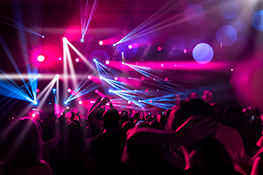The Ultimate Guide to Stage Lighting Safety Regulations
Stage lighting enhances any performance, transforming a simple set into a captivating spectacle. However, the power behind those dazzling effects demands respect and adherence to strict safety regulations. Ignoring these rules can lead to serious accidents, injuries, and even fatalities. This guide provides a comprehensive overview of essential stage lighting safety regulations, ensuring you put on a brilliant show while prioritizing the well-being of your cast, crew, and audience.
Understanding the Risks: Potential Hazards in Stage Lighting
Before delving into the regulations, let’s understand the inherent risks associated with stage lighting. These include:
- Electrical Hazards: High voltage electricity powering the lights poses a significant risk of electric shock, burns, and fire.
- Heat Hazards: Many stage lights generate intense heat, posing burn risks to individuals working nearby or touching hot surfaces.
- Fire Hazards: Faulty wiring, overloaded circuits, or improperly positioned lighting can easily trigger fires.
- Mechanical Hazards: Falling lights, improperly rigged equipment, or collapsing structures can cause serious injuries.
- Radiation Hazards: Certain types of lighting, particularly high-intensity discharge (HID) lamps, emit UV radiation which can damage eyes and skin.
Essential Safety Regulations & Compliance: A Global Perspective
While specific regulations vary by country and region, several overarching principles consistently apply. These principles usually fall under broader occupational safety and health legislation, but are often further specified within industry best practices and guidelines. Key areas include:
Risk Assessments & Method Statements
A thorough risk assessment is crucial before any lighting setup. This involves identifying potential hazards, evaluating risks, and implementing control measures. A method statement details exactly how these control measures will be implemented.
Electrical Safety Regulations
This is paramount. Compliance with electrical codes is non-negotiable. This includes:
- Using certified equipment and cabling.
- Regular PAT (Portable Appliance Testing) to ensure electrical safety.
- Proper grounding and earthing of all equipment.
- Employing Residual Current Devices (RCDs) to protect against electric shocks.
- Avoiding overloading circuits.
Safe Handling & Operation of Lighting Equipment
Proper training for all personnel handling lighting equipment is essential. This includes understanding:
- Safe lifting and rigging techniques.
- Correct lamp handling and replacement procedures.
- Emergency shutdown procedures.
- Awareness of the dangers of UV radiation.
Emergency Procedures & Signage
Clear emergency procedures should be in place and well-understood by all personnel. Appropriate warning signage should be prominently displayed near any potential hazard, including high voltage areas and heat sources.
Regular Inspection & Maintenance
Regular inspection and maintenance of lighting equipment is vital for preventing accidents. This should include visual inspections, testing of electrical components, and timely replacement of worn or damaged parts. Maintaining detailed records of these inspections is crucial.
Staying Compliant: Resources & Further Information
Staying updated with the latest safety regulations is crucial. Consult your local authorities for specific regulations and guidelines in your area. Professional associations within the entertainment industry often provide valuable resources, best practices, and training opportunities.
Conclusion: Prioritizing Safety for a Successful Production
Stage lighting safety shouldn’t be an afterthought; it should be an integral part of every production. By understanding and adhering to these regulations, you’ll not only ensure the safety of everyone involved but also contribute to a smooth and successful event. Remember, a brilliant performance is only as good as the safety measures implemented to support it.


 Auditorium Construction Services
Auditorium Construction Services 